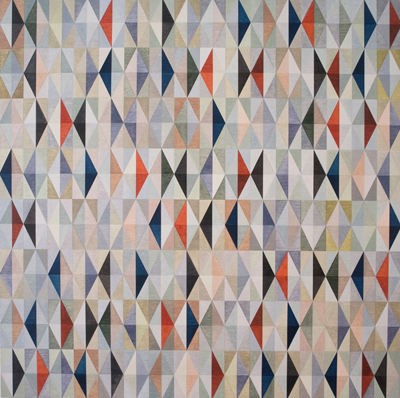A system that does not produce uniformity
I’m a project manager as well as an artist – a rather unusual combination, but it works for me. It keeps my feet on the ground and my family fed and clothed. Which is nice! Ever so often, the two worlds meet. For example: a number of times now I’ve been asked to do project management training courses for art(y) institutions – me being able to sympathise both with the artistic temperament and the control-freak nature of project managers. I’ve also been asked to write about the combination, and managed to concote a small article. Here goes:
Five tips for managing art projects
Managing art projects – is it even possible? On the one hand, one does not want to confine an artist – even if this were an option. On the other hand, the project needs specific limits as to time, money and quality. Ideally, a project works towards a tangible end result – but the artist is a free spirit. A typical artist exchanges a good idea for a better in a blink or a heartbeat. Five tips to create order in the creative chaos.
1. Making art isn’t a solo tour. We’ve been raised with the image of the artist as a solitary genius, working in a mysterious studio where the production process of art takes place unobserved. This is no longer the case – if it ever was: making art is teamwork. So select an artist for the quality of his work, but also for his proven record to work with other people and to function as part of a team.
2. Inspiration is good, experience is better. Select art that is cutting-edge and exiting. But make sure the artist has experience making work of the proposed size and complexity, and is thoroughly familiar with the techniques to be used. Question marks now make for trouble later. Have constructions calculated by experts, ask questions about the robustness and life expectancy of materials to be used. Get a second opinion on the estimations for maintenance and repair.
3. The work should be delivered as planned. The client has selected a work based on drawings, mock-ups or other forms of representation. The artist is contracted to make this work. So this is the work the client’s going to get! Make sure you get frequent status updates – arrange to get a picture of the work mailed from the studio every day. This way you will have an idea if the progress being made, and the ” by the way – I had a better idea ” syndrome is spotted the moment it occurs.
4. Double the effort. When calculating time and money for your project, make sure to factor in a sizable margin of error. It isn’t over the top to double the initial estimation one gets from the artist. And even then the coffers may empty at a lethal rate…. Make sure to have regular progress meetings with your team to discuss progress – and don’t let the artist get away with not attending. Make sure you regularly inform the client on the progress being made, any problems and risks that crop up and the way you are dealing with them.
5. Focus on the client. Spend time with the client from the very beginning – this investment will pay handsome dividends in the end. Make a ‘service level agreement’: budget, time to deliver, expected quality. Be especially clear on the location where the finished work will be installed – don’t accept any vacillation on this point. Try and establish a level of trust – the client should not feel the need to look over your shoulder all the time.
And by the way: the painting is by Biggs and Collings

